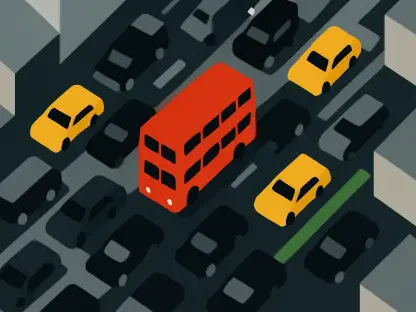I’m thrilled to sit down with Katarina Railko, a seasoned expert in hospitality with deep roots in the travel and tourism industry. With her extensive experience and passion for entertainment and events, Katarina has become a prominent voice at expos and conferences worldwide. Today, we’re diving into the groundbreaking “Sky Studio Challenge” by Qatar Airways and Google, exploring the intersection of inflight connectivity, AI-driven creativity, and the future of airline innovation. Our conversation touches on the ambitious goals of this project, the transformative role of high-speed Wi-Fi, the creative process at 30,000 feet, and what this means for passengers and the industry as a whole.
Can you walk us through the vision behind the “Sky Studio Challenge” and what this inflight production project aimed to achieve?
The “Sky Studio Challenge” was all about pushing the boundaries of what’s possible in the air. The core vision was to demonstrate that full-scale, professional-grade commercial production could happen during a flight, using cutting-edge technology and connectivity. We wanted to prove that the sky is no longer a barrier to creativity or productivity. By producing two complete commercials on a 15-hour flight from Doha to Atlanta, the goal was to showcase how airlines can leverage high-speed inflight Wi-Fi and AI tools to redefine workflows, not just for entertainment but for business and innovation as well. It was a bold statement about the future of travel and technology.
Why was conducting this challenge on a long-haul flight so significant to the project’s objectives?
Long-haul flights are the ultimate test of endurance, both for passengers and technology. They represent a real-world scenario where time and connectivity are critical. By choosing a 15-hour journey, we could simulate the demands of a full production cycle—brainstorming, creating, editing, and collaborating in real time—under the constraints of being airborne. It highlighted that even on the longest routes, passengers and professionals can stay connected and productive, mirroring the capabilities you’d expect on the ground. It’s a game-changer for how we think about using flight time.
How did high-speed Starlink connectivity enable the success of this ambitious inflight production?
Starlink was the backbone of this project. It provided the kind of bandwidth that made heavy file transfers, complex scene generation, and real-time collaboration possible at 30,000 feet. Tasks like uploading large video files or syncing with ground teams happened seamlessly, which is unheard of in traditional inflight scenarios. Without this level of connectivity, the project would have been stuck at the idea stage. It allowed us to treat the aircraft as a floating studio, breaking down the isolation of being in the air and connecting creatives with resources on the ground instantly.
Can you describe the creative process behind producing two full commercials during that flight?
The creative process was both exhilarating and intense. We had a tight 15-hour window to ideate, script, design, and finalize two commercials. The team worked in a highly collaborative environment onboard, bouncing ideas around while leveraging AI tools to generate visuals and edit content on the fly. The cabin became a brainstorming hub, with every seat turned into a workspace. What made it unique was the immediacy—decisions had to be quick, and the real-time feedback loop with ground teams via Starlink kept everything moving. It was raw, fast-paced creativity under very unconventional circumstances.
In what ways did AI tools, particularly Google’s Gemini models, enhance the production process at such an altitude?
AI tools like Gemini were a revelation for this project. They drastically cut down the time needed for tasks like image and video generation, which are typically resource-heavy. At cruising altitude, where every second counts, these models allowed us to create high-quality visuals and iterate on concepts almost instantly. They acted as a creative co-pilot, offering suggestions and refining outputs based on our inputs. This speed and adaptability meant we could focus more on storytelling and less on technical bottlenecks, making production not just possible but efficient in the sky.
What unique challenges did the team encounter while producing commercials during a flight, and how were they overcome?
Working in a confined space like an aircraft cabin presented logistical challenges—limited movement, ambient noise, and the need to balance with other passengers’ comfort. Technologically, while Starlink was incredibly reliable, there were moments of minor latency that required us to adapt workflows on the spot. We overcame these by having backup plans, like offline editing options, and by maintaining constant communication with ground support for troubleshooting. The team’s flexibility and the robustness of the connectivity ultimately turned potential hurdles into just part of the adventure.
With over 100 widebody aircraft now equipped with Starlink, how does this milestone enhance the passenger experience on Qatar Airways?
Having Starlink on over 100 widebody aircraft is a massive leap forward for passenger experience. It means travelers on long-haul routes across the Americas, Europe, Asia, and beyond can enjoy Wi-Fi that’s often faster than what they have at home. Whether it’s streaming, working, or staying connected with loved ones, the frustration of spotty or slow internet is a thing of the past. This milestone ties directly into projects like the “Sky Studio Challenge” because it shows that the infrastructure is already in place to support not just basic browsing but complex, data-intensive tasks, setting a new standard for what flying can be.
What makes this “first-of-its-kind challenge” a turning point for the airline industry as a whole?
This challenge marks a shift in how we view inflight connectivity—it’s no longer just a perk but a platform for innovation. Producing full commercials in the air proves that airlines can be more than transportation providers; they can be hubs for creativity and productivity. It’s groundbreaking because it challenges the industry to rethink the potential of flight time. Beyond entertainment, imagine business meetings, live events, or real-time global collaboration happening inflight. This project sets a precedent that high-speed connectivity can transform the passenger experience and open up entirely new operational possibilities for airlines.
Looking ahead, what is your forecast for the future of inflight connectivity and its impact on travel?
I believe inflight connectivity is on the cusp of becoming as ubiquitous and reliable as ground-based internet. In the next few years, we’ll see it evolve from a luxury to a baseline expectation on all flights, not just long-haul. The impact on travel will be profound—passengers will demand seamless digital experiences, from entertainment to remote work, and airlines will compete on the quality of their connectivity as much as on comfort or routes. Projects like the “Sky Studio Challenge” are just the beginning; they hint at a future where the sky is no longer a disconnect but an extension of our connected world, redefining how we live and work while we travel.









